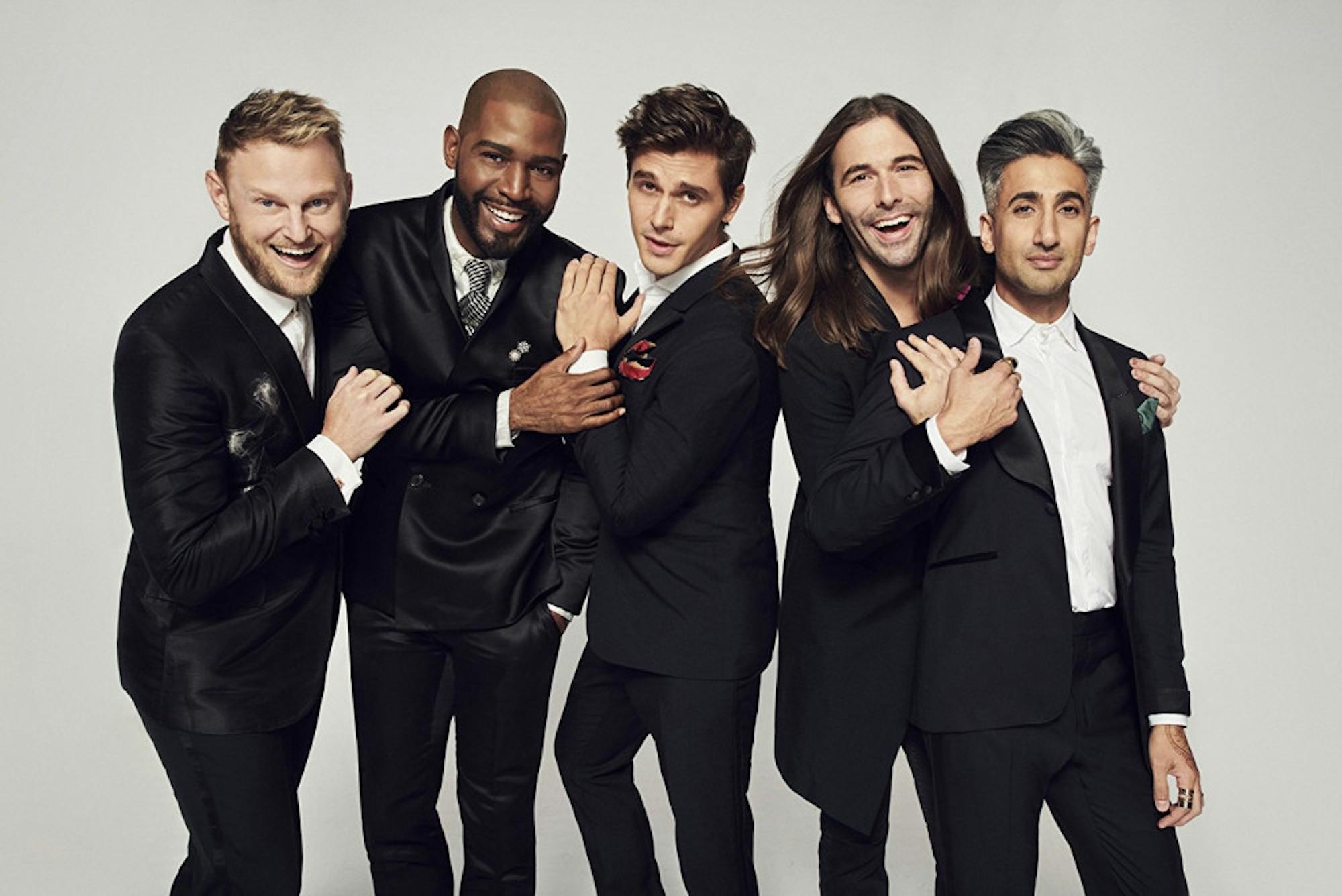Joining Netflix on Feb. 7, “Queer Eye” (2018–) is the streaming site’s newest critically acclaimed darling. A reboot of the Bravo hit “Queer Eye for the Straight Guy” (2003–2007), the show maintains the same format as its predecessor: In each of the eight episodes, five gay men swoop in to help a struggling man improve his style, decor, grooming, culinary skills and cultural know-how. The “Fab Five” features culture expert Karamo Brown, food and wine specialist Antoni Porowski, groomer Jonathan van Ness, stylist Tan France and interior designer Bobby Berk. “Queer Eye” is about redefining masculinity and teaching each of the eight “heroes” how to be more thoughtful, put-together and intentional with their appearances.
At its best, “Queer Eye” is heartwarming, phenomenal television. In the first episode, the Fab Five takes on Tom, a 57-year-old trucker in Dallas, Ga. who lives alone in a small basement apartment and insists that “you can’t fix ugly.” Over the course of the week, the Fab Five coach Tom on how to be confident again: Tan teaches him how to dress for his skin tone and body type, Bobby tosses out his stained recliner chair and gives him a sleek new space and Jonathan teaches him how to use face masks to care for the rashes on his skin caused by lupus. The Fab Five and Tom share a tender, tearful moment toward the end of the episode when they reflect on how far Tom has come since the beginning of the week. His beard is trimmed, his skin is noticeably better, he has trendy Warby Parker glasses and a cute cap and he’s even learned how to make guacamole — with yogurt, regrettably.The episode culminates in Tom going on a date with his ex-wife, Abby, and he reflects on his week, saying, "I’ve never hung with gay guys before, and they were great. They were so open with me, and I was so open with them.” That’s what “Queer Eye” does so well: It offers a progressive, emotionally-available model of masculinity and teaches men how to be intentional about self-care.
But “Queer Eye” has its low points. The show feels rewarding when the transformation feels genuine, but despite the charisma and exuberance of the Fab Five, a few of the episodes flop. In the episode “Dega Don’t,” the guys take on the case of Cory, a cop and NASCAR enthusiast who hosts elaborate costume parties for the annual Talladega race in a basement dingy enough to belong on Boston Avenue. Instead of making over the basement, Bobby the designer chooses to redo the upstairs section of the house and deck it out with massive NASCAR decals to make it a masculine space. Cory’s problem wasn’t that he didn’t have a space for himself; it was that he was a slob in the basement he had commandeered for grown-up frat parties. There are other head-scratching moments. In the episode “To Gay or Not Too Gay,” which features a gay man, AJ, Karamo brings him ziplining to give him the courage to come out to his stepmother — the connection was lost on this reviewer — and then AJ reveals his sexuality to her in a scene that feels intrusive and excessive, considering the gravity of coming out for queer people.
These examples are a little nit picky, but there are greater representational problems. By dropping “for the Straight Guy” from the title, the reboot of “Queer Eye” is supposedly more inclusive, with one of the episodes featuring a gay man, but the show conforms to familiar models of queerness in pop culture. Here, gay men exist to help others. Whether it’s the “Fab Five” in “Queer Eye” or the “gay best friend” archetype pervasive in entertainment, gay men come off as an accessory in the service of others. “Queer Eye” is undoubtedly fun and lighthearted, but representation of marginalized communities matters, and cis-gay men teaching mostly straight men the minimum requirements of being functioning adults seems like a poor representation of the queer community as a whole and out of place in 2018.
Overall, “Queer Eye” is good reality television. It brings up important conversations about loneliness among adult men, how self-care intersects with traditional concepts of masculinity and is chock full of Jonathan van Ness “fiercedom.” But it’s not, as Hadley Freeman at the Guardian says, the best television show of the year. Most of the criticism of “Queer Eye” has focused on Antoni’s supposed lack of culinary talent, but most reviewers have been silent on the representation of queerness and just how inconsistent the eight episodes are. If each of the transformations felt as authentic and tender as Tom’s, “Queer Eye” might live up to its 100 percent rating on Rotten Tomatoes, but unfortunately viewers have to slog through a few episodes that fail to resonate.
Netflix's 'Queer Eye' is fun, fabulous, but fails to live up to acclaim

(From left to right) Bobby Berk, Karamo Brown, Antoni Porowski, Jonathan van Ness and Tan France in Queer Eye.
Summary
"Queer Eye" may be fun, heartwarming and occasionally profound, but larger issues of queer representation go unconsidered in its inconsistent 8-episode season.
3 Stars





